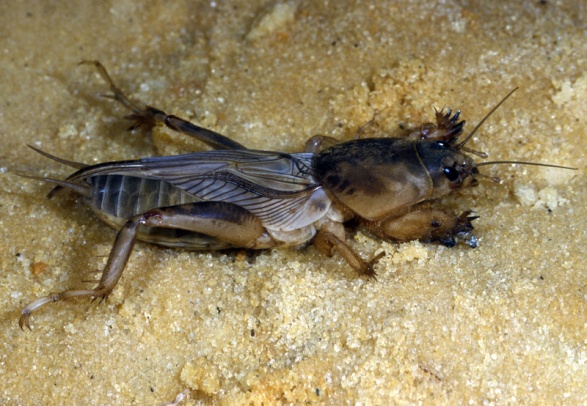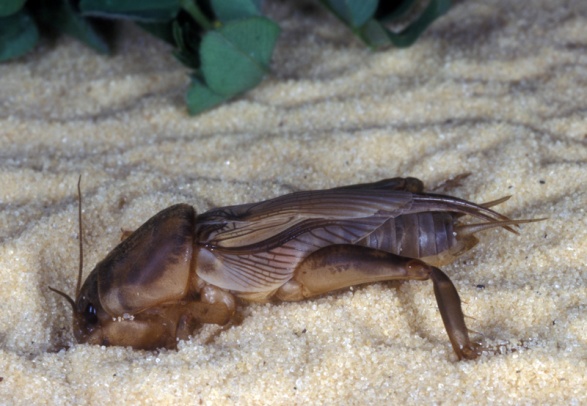
Tawny mole cricket
Scapteriscus vicinus Scudder
(Insecta: Orthoptera: Gryllotalpidae)
Adults are yellowish brown with moderately long forewings and long hind wings. The characteristic bladelike foretibia are used for digging tunnels into the soil. The enlarged hind legs are used to produce a specific calling song — a loud trill at 130 pulses per second during the first 90 minutes after sunset. Eggs are bean shaped, grayish brown, and 3 to 4 mm long. Nymphs resemble wingless, smaller versions of the adults.
One generation occurs per year. Eggs are laid loosely clustered within a subterranean chamber in April to May, and nymphs hatch within 10 to 40 days. Nymphs are present through August, when adults begin to emerge. Both nymphs and adults may overwinter.
Tawny mole cricket is a non-native species that was detected first in Brunswick, Georgia, in 1899. Its current distribution spans the southeastern United States from North Carolina to Louisiana as well as all of Florida.
Tawny mole cricket feeds on turf and grass as well as vegetable and small fruit crops. In Florida, strawberry and tomato fields are damaged frequently.
Images
To
save the Web-optimized images shown below to your hard drive:
PC users: right click to "Save Picture (or Image) As..."
Mac users: click and drag to your desktop.

Adult of tawny mole cricket, Scapteriscus vicinus Scudder
(Photographer: Paul Choate, University of Florida)

Adult male of tawny mole cricket, Scapteriscus vicinus Scudder, digging into sand
(Photographer: Lyle Buss, University of Florida)